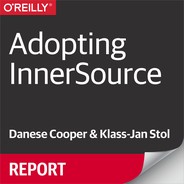Book Description
The application of open source principles and practices to create in-house software is taking off in the corporate world. Known as InnerSource, this development strategy lets development teams collaborate and share code to speed delivery and improve quality while helping to eliminate silos and bottlenecks. With this practical ebook, you’ll explore case studies from Bell Labs, PayPal, Ericsson, Nike, Bosch, and Europace that demonstrate why and how InnerSource can work in your organization.
These case studies candidly discuss the difficulties of starting InnerSource projects, as well as the benefits and trials each company experienced during the process. Authors Danese Cooper and Klaas-Jan Stol also provide executives, midlevel managers, and developers with advice for choosing and structuring your first InnerSource experiment.
You’ll explore how:
- The Apache Software Foundation codified many of the best practices learned by open source developers over decades
- Bell Laboratories used an early InnerSource approach to implement VoIP
- Bosch uses InnerSource to improve collaboration among business units worldwide
- PayPal’s Symphony module developed into the company’s longest and most intentional InnerSource experiment
- Fintech company Europace uses InnerSource to move toward decentralized self-organization
- Ericsson developed its own unique InnerSource model for several projects, including a consistent user interface
- Nike built a reusable continuous development infrastructure using InnerSource principles
